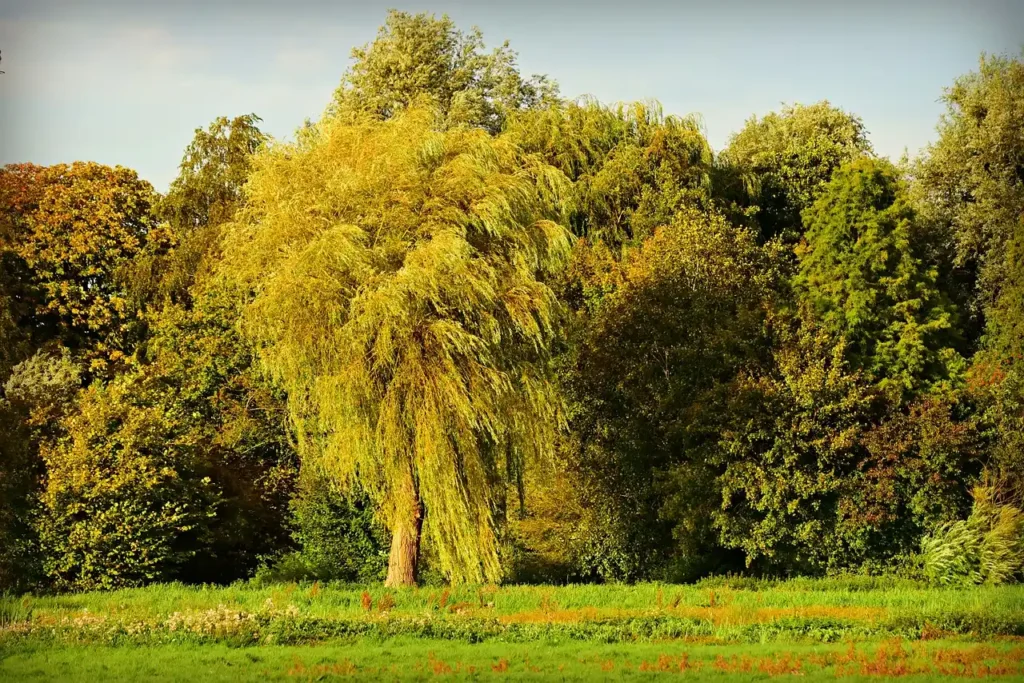
Among both gardening enthusiasts and nature admirers, Gardeners Dream willow trees stand as a favoured choice. Their distinct attributes and merits infuse a sense of grace and allure into any landscape. Within this article, we embark on an exploration of captivating facts surrounding Gardeners Dream willow trees. We’ll delve into their identification, the virtues of willow bark, and the diverse array of willow tree types.
Table of Contents
Identifying Gardeners Dream Willow Trees
Willow trees are renowned for their slender branches and elongated, pointed leaves. The hallmark of willow trees lies in their graceful weeping demeanour, which augments their enchantment. To discern a willow tree, cast your gaze upon its cascading, elongated branches.
Notably, the leaves take the form of lance shapes, featuring serrated edges and a delicate pale green hue. These trees can ascend to heights of up to 30 feet and span widths of 20 feet, casting a mesmerising presence within gardens and landscapes.
The Benefits of Willow Bark
For centuries, willow bark has held a revered status owing to its medicinal attributes. It houses salicin, a natural analgesic akin to aspirin. Willow bark finds utility in addressing a spectrum of disorders, encompassing headaches, back discomfort, and arthritis. Its repertoire extends to encompass anti-inflammatory and antipyretic properties, rendering it an effective remedy for fever and inflammation.
Different Types of Willow Trees
A rich tapestry of over 400 willow tree species graces the botanical realm, each endowing distinct traits and advantages. Willow trees emerge as a hybrid variety that amalgamates the finest attributes of multiple species. Fellow members of the willow family include the weeping willow, the black willow, and the white willow.
Weeping willows are renowned for their elegant, cascading branches and often find a niche near water elements. Black willows, indigenous to North America, earned acclaim for their robust, supple wood. In turn, white willows boast medicinal properties and frequently contribute to the production of aspirin.
Caring for Gardeners Dream Willow Trees
For those captivated by the prospect of cultivating willow trees, acquiring an in-depth comprehension of proper upkeep proves to be of the utmost importance. These trees flourish when exposed to consistent hydration, a need that becomes even more pronounced during their initial growth phase.
The act of pruning emerges as a valuable practice, serving to both maintain their graceful silhouette and encourage robust development. Among home gardeners, the favoured method of propagation revolves around cuttings, an approach that further contributes to their charm and popularity.
Beyond the surface appeal and healing properties, willow trees bring forth a diverse range of environmental advantages. Their remarkable ability to absorb surplus soil moisture renders them an optimal choice for regions characterised by dampness. Furthermore, they establish a haven that nurtures a variety of wildlife, encompassing avian creatures, insects, and diminutive mammals.
Conclusion
Incorporating willow trees into the landscape introduces a multifaceted and captivating element. The interplay between their unique cascading posture, slender boughs, and refined leaves adds an air of sophistication and allure to any surroundings.
Whether valued for their medicinal qualities or their contributions to the ecosystem, these trees stand as a testament to their entrancing essence. Perhaps the time has come to contemplate the inclusion of a Desired Willow tree within your garden, undoubtedly ushering in numerous years of magnificence and pleasure through vigilant and meticulous nurturing.


